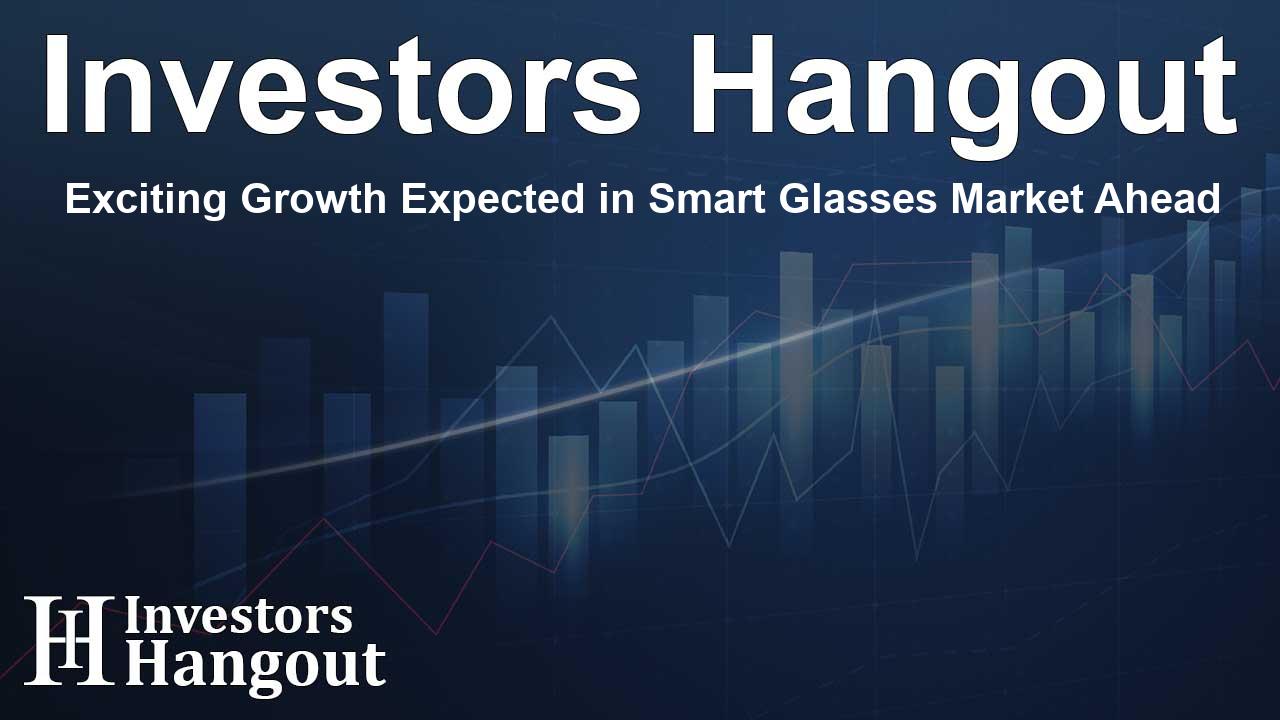Exciting Growth Expected in Smart Glasses Market Ahead

Smart Glasses Market Projected to Surge by USD 76.5 Million
The smart glasses market is experiencing a promising trajectory, with growth estimates reaching USD 76.5 million between 2024 and 2028. This surge is largely influenced by advancements in industrial automation and the integration of artificial intelligence (AI). Reports indicate a compound annual growth rate (CAGR) of 13.84%, suggesting a robust expansion in various sectors.
Drivers of Market Expansion
One of the primary catalysts for this market growth is the increased implementation of automation within the industrial sector. As companies strive for enhanced efficiency and productivity, the demand for smart glasses continues to rise. These futuristic devices not only assist in tasks but also elevate operational standards. Furthermore, the landscape is witnessing an uptick in strategic partnerships and acquisitions that empower manufacturers to innovate and diversify their offerings.
The Impact of Strategic Partnerships
A great example of this trend is seen with Vuzix Corporation's collaboration with Rods and Cones. This partnership integrates Vuzix’s M-Series Smart Glasses into advanced surgical platforms, showcasing how such collaborations can lead to pioneering developments in smart glass technology. The culmination of these efforts is expected to yield more sophisticated smart glasses that are well-equipped for modern applications.
Sector Diversification and Innovation
The smart glasses market is not confined to any single industry but is penetrating various sectors including automotive, healthcare, and consumer electronics. An impressive feature of smart glasses is their capability to transition from opaque to transparent, offering panoramic visual experiences critical for numerous applications in cars and tourist facilities. This multifunctionality drives additional market demand, as consumers seek versatile solutions.
Technological Advancements Driving Innovation
Recent technology trends such as electrochromic and photochromic innovations are paving the way for smart glasses that offer functionalities like thermal insulation and on-demand tinting. Such features are particularly appealing in specialized environments like hospitals and offices where adaptability is crucial. The integration of these technologies not only provides aesthetic benefits but also enhances user comfort and experience.
Challenges Facing the Market
Despite the positive outlook, the smart glasses market faces several challenges, primarily associated with high initial costs. With an average selling price around USD 1,397.39, widespread consumer adoption remains low. The market still sees a significant focus on enterprise solutions, which might hinder broader appeal among individual consumers. The gap in awareness and limited application scenarios for augmented reality (AR) further restricts growth prospects.
Focus on Consumer Engagement
Vendors are now pivoting their strategies to expand consumer engagement by releasing commercial versions of smart glasses tailored for non-enterprise users. By addressing different price points and functionalities, companies aim to make smart glasses more accessible and appealing to a broader audience. The introduction of developer kits is also gaining traction, allowing more innovative applications to flourish as developers explore the potential of smart glass technologies.
Segment Analysis of the Market
The smart glasses market also exhibits notable segmentation across various dimensions including product types and end-users. The two main segments are developer and commercial products, catering to both technology enthusiasts and general consumers. Furthermore, operating systems like Android and Windows are predominating in this area, ensuring a wide compatibility range for users.
Regional Insights
From a geographical perspective, North America leads the market, accounting for 64% of contributions, followed by Europe and the Asia-Pacific (APAC) regions. As demand continues to grow worldwide, various regional markets are maximizing their offerings to cater to local preferences while aligning with global trends.
Conclusion
As we venture into the next few years, the smart glasses market is set on an impressive growth path driven by innovations in technology and strategic collaborations. With a significant increase projected in revenue, smart glasses are not just a fad—they are poised to revolutionize various facets of our daily lives and industries alike.
Frequently Asked Questions
What is the projected growth of the smart glasses market?
The smart glasses market is projected to grow by USD 76.5 million from 2024 to 2028.
What are the main drivers of growth in this market?
Main drivers include advancements in industrial automation and strategic partnerships that enhance product offerings.
What challenges does the smart glasses market face?
Challenges include high initial costs and low consumer adoption due to limited awareness and functionality.
Which industries are adopting smart glasses?
Key industries using smart glasses include automotive, healthcare, and consumer electronics.
Where is the largest market for smart glasses located?
North America holds the largest share of the smart glasses market at 64%.
About Investors Hangout
Investors Hangout is a leading online stock forum for financial discussion and learning, offering a wide range of free tools and resources. It draws in traders of all levels, who exchange market knowledge, investigate trading tactics, and keep an eye on industry developments in real time. Featuring financial articles, stock message boards, quotes, charts, company profiles, and live news updates. Through cooperative learning and a wealth of informational resources, it helps users from novices creating their first portfolios to experts honing their techniques. Join Investors Hangout today: https://investorshangout.com/
Disclaimer: The content of this article is solely for general informational purposes only; it does not represent legal, financial, or investment advice. Investors Hangout does not offer financial advice; the author is not a licensed financial advisor. Consult a qualified advisor before making any financial or investment decisions based on this article. The author's interpretation of publicly available data shapes the opinions presented here; as a result, they should not be taken as advice to purchase, sell, or hold any securities mentioned or any other investments. The author does not guarantee the accuracy, completeness, or timeliness of any material, providing it "as is." Information and market conditions may change; past performance is not indicative of future outcomes. If any of the material offered here is inaccurate, please contact us for corrections.